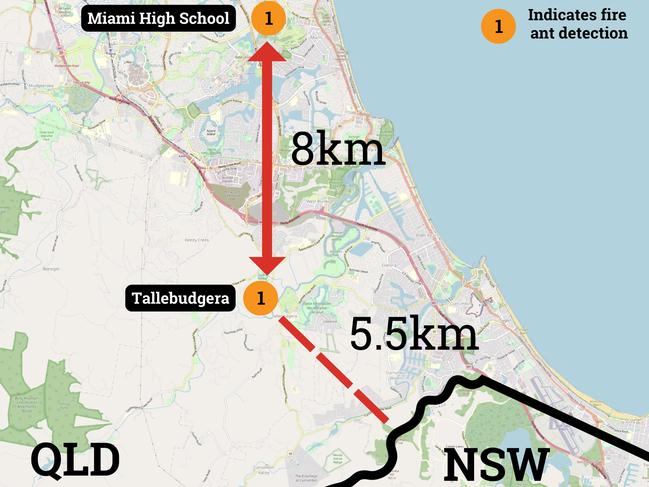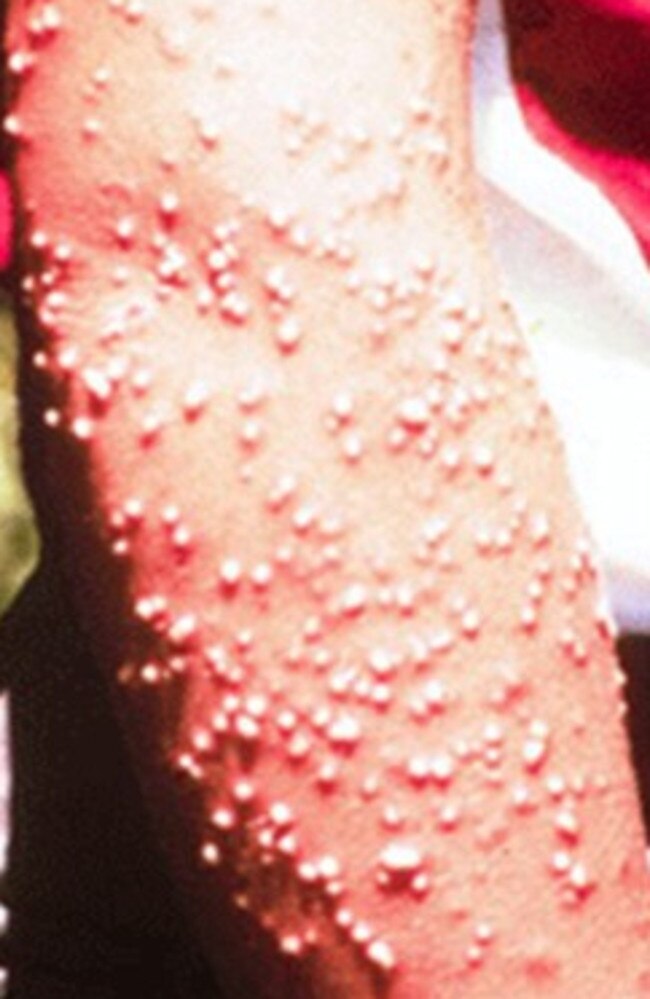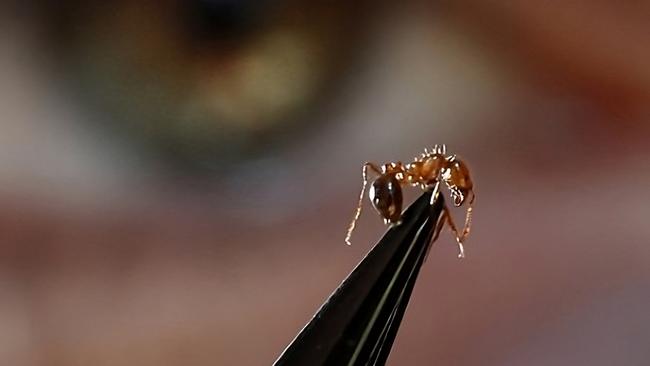Aussie state at ‘extreme risk of being invaded’ by red fire ants
Forget cane toads. Another menacing pest with a painful sting is getting closer to the NSW border.
Animals
Don't miss out on the headlines from Animals. Followed categories will be added to My News.
Forget cane toads. New South Wales is now at “extreme risk” of being invaded by another menacing pest.
An outbreak of highly invasive and destructive red fire ants has been spotted just 5.5km from the NSW border in Queensland.
The discovery at a pony club in Tallebudgera has sparked a dire warning from a peak national environmental conservation organisation, who has called for an eradication program as soon as possible.
The new outbreak is 8km further south than another recent outbreak discovered at the Miami State School on the Gold Coast.

Invasive Species Council spokesman Reece Pianta detailed the impact a border crossing into NSW would have.
“This means NSW is now at extreme risk of being invaded,” he said.
“The distance is now close enough for a single queen ant’s flight to spark a fire ant infestation across the border.
“If fire ants spread across Australia, they will be worse than rabbits, cane toads, foxes and feral cats combined.”
Mr Pianta called out to the federal government and “wall to wall” Labor state governments to fast-track a $400 million eradication program.
A 2021 strategic review of previous eradication efforts already in place found that governments would only be able to contain an ant outbreak in the Brisbane area under the status quo.
The federal government allocated funding towards an eradication earlier this month, but the council questions whether it will roll out quick enough.

“The government’s own strategic review estimated that at least $200 to $300 million per year will be required for ongoing efforts to achieve eradication by 2032,” Mr Pianta said.
“But instead they have only committed $60 million for this financial year, which is $34 million less than was spent last financial year.”
“Fire ants will devastate our native wildlife and cause billions of dollars in lost agricultural production every year.
“In Queensland, we are already seeing sports fields and beaches closed due to the extremely painful sting inflicted by fire ants.”
The ants, originally from South America, were imported to Australia in the late 90s in freight from the US but weren’t discovered until 2001.
The ants have spread across most of the southern US and are currently spreading through China at about 80km a year.
As the invasive pests march toward NSW, so does the potential to cause more than $1 billion of damage to crops, infrastructure and homes each year.

A cost-benefit analysis commissioned by a steering committee from Central Queensland University, managing the outbreak of red fire ants, concluded that the tiny insects could cause “cascading negative impacts on future generations” if they are not contained and eradicated.
Yet, despite the Australian government investing $400 million in an eradication program, the ants have been found in at least 10 locations across the Gold Coast, sparking fears a crossing into NSW is imminent.
Economists at Central Queensland University modelled the economic impacts of the spread of the fire ants if they progressed at a rate of 5km a year, with a “maximum” reach of 48km a year.
With the best case scenario – if the ants only spread at 5km a year – the ants will reach high-value farmland in the Darling Downs in southern Queensland by 2035, The Guardian reports.
In the worst case, the pests will reach the Liverpool Plains and the northern outskirts of Sydney by 2035.

The annual costs to the economy for a 5km-a-year invasion were about $890 million, increasing significantly year on year.
And if they made it to Sydney – as estimated in the 48km mapping – the costs would blow out to $1.2 billion a year.
Most of that cost would be associated with households increasing spending on pesticides, veterinary bills, and electrical faults caused by the ants.
– with Georgina Noack
Originally published as Aussie state at ‘extreme risk of being invaded’ by red fire ants





